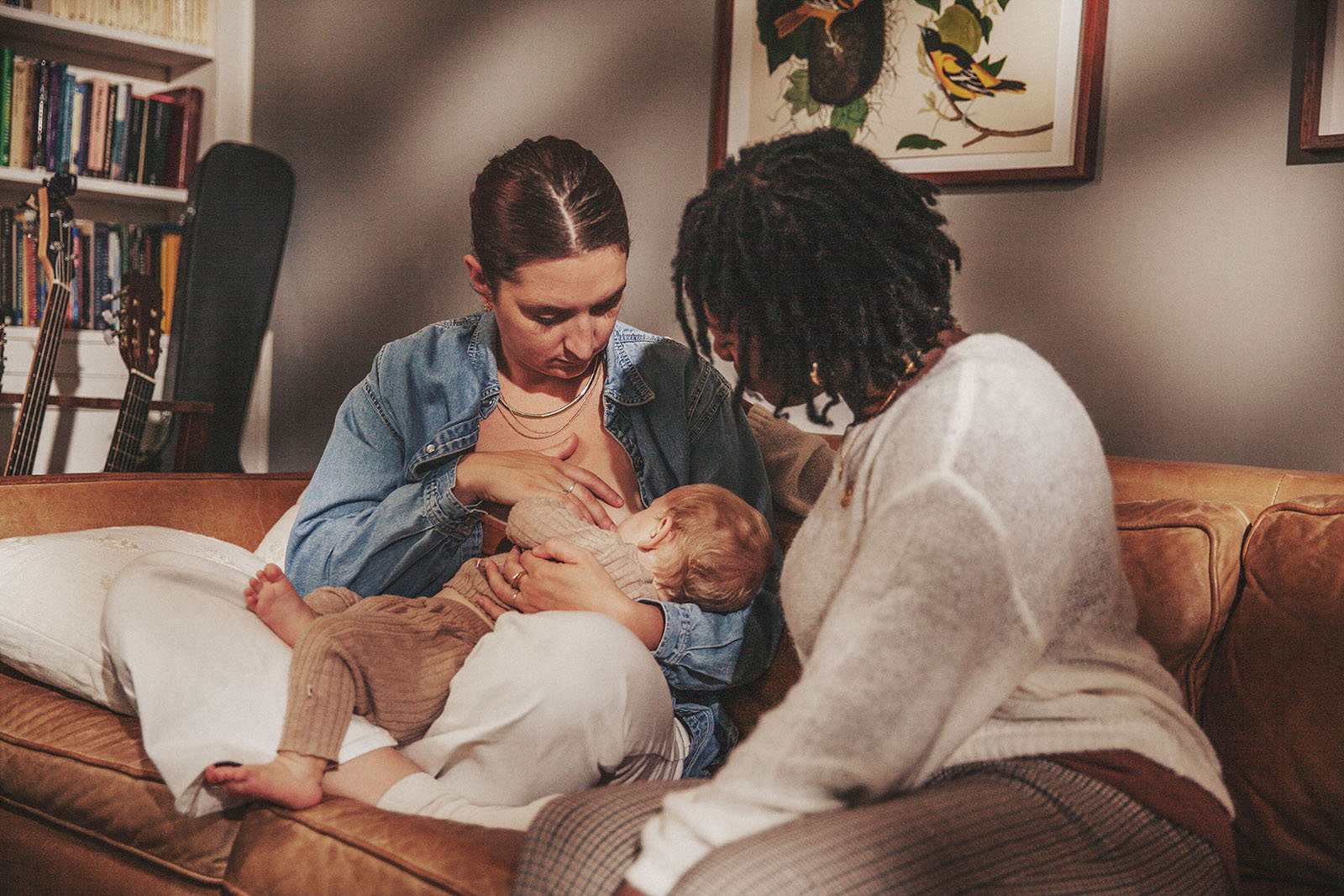7 things every mom needs to know about breastfeeding a newborn
Here’s some real talk about breastfeeding your newborn — we’re not holding back!
While pregnancy symptoms and birth stories may be topics of baby shower conversation, breastfeeding is not discussed as often. Part of the reason? It’s different for every mom and baby. And it’s not always as magical as people make it out to be—at least not in the early postpartum days while you’re still getting the hang of it. Never fear, we’re here to give you the down and dirty info on those first days breastfeeding your newborn.
#1 You will have to shove your boob into your baby’s mouth.
Babies have tiny mouths. To get a good, deep latch, you’ll probably have to squish your boob by cupping your fingers around it behind the nipple and flattening it into a “sandwich” (yes, this is the term you’ll hear from lactation consultants and nurses). Touch your nipple to your baby’s upper lip until it opens, then gently push your nipple and areola into your baby’s mouth. Need to give them an extra push? Squeeze out a little colostrum from your nipple, or use a little bit of sugar water while holding your baby to get their attention.
#2 Breastfeeding your newborn may not come naturally.
While breastfeeding is a natural act, it doesn’t always come naturally. You and your baby are just getting to know each other. You’re recovering from labor and delivery, and your baby is totally new to this big world. So finding your rhythm and getting your baby properly latched will take some time, and it may feel awkward and new. This is one of those times when in-person, hands-on help is often the best way to work out any kinks, so don’t hesitate to work with an IBCLC if you are feeling unsure.
#3 Your nipples may be sore.
Your nipples probably haven’t seen this much action before, so’s going to take a little time for them to toughen up. In the meantime, lube up with nipple cream, air them out when you can (yes, you’ll spend a lot of time topless) and be consistent with getting a good latch. If you have a lot of pain or experience cracking or bleeding, make an appointment with an International Board Certified Lactation Consultant (IBCLC) to pinpoint the source and treat it. Pro tip: Try MediHoney. It’s a lifesaver for cracked, sore nipples.
#4 Nurse a lot. Then nurse some more.
Your milk will probably “come in” about two to three days after delivery. Until then, breastfeeding your newborn often will stimulate milk production and ensure he or she receives colostrum—the first milk that’s thick, yellow and full of nutrients and antibodies. You’ll be breastfeeding around the clock (we’re talking 10 to 12 times in 24 hours), even waking up your baby to nurse.
#5 Your milk might not come in right away — and that’s OK.
It may take as many as five or six days for your milk to come in, especially if you have a stressful birth or a C-section, so don’t freak out. Your colostrum is the perfect nutrition for your baby, and a newborn’s stomach is tiny. Your doctor may monitor the baby’s weight more closely, but keep up the breastfeeding. You’re producing wonderful nutrients that your baby needs!
#6 You may experience major engorgement when your milk comes in.
When your milk production ramps up, you’ll probably feel it. Your boobs may become engorged: Hard as rocks, warm to the touch and busting out of your nursing bra. Keep nursing through it. Your baby needs to feed, and you don’t want to risk getting mastitis or clogged ducts. Massage your boobs in the direction of your chest to your nipple. Apply cool compresses for about 20 minutes to relieve swelling and warm compresses for a few minutes to help get milk flowing. If you need to express some milk to soften your boobs enough to get a good latch, try hand expressing, reverse pressure softening or using a manual pump just until you’re a bit more comfortable.
#7 Breastfeeding your newborn gets easier.
The first few weeks can be tough as you get more comfortable and your milk supply regulates. But you will find your groove! Your nipples will not always hurt, your boobs won’t leak like crazy forever, and you won’t always have to take your shirt off and use a million pillows to get a good latch.
Until then, don’t hesitate to get help. IBCLCs are an amazing resource and can work with you to troubleshoot any feeding-related issues. A visit with an IBCLC can reassure you that your baby is getting enough milk or help you pinpoint why the latch is feeling off. Just reach out to our team at The Lactation Network and we’ll connect you with an IBCLC for an insurance-covered consultation often in the comfort of home. We want to help you feel as confident as possible during your first days and weeks of breastfeeding your newborn.
We know what early parenthood is like, and we’ve been there—searching for countless, often conflicting answers online. At The Lactation Network, our International Board Certified Lactation Consultants (IBCLCs) are committed to providing families with trusted, authoritative information about your prenatal-to-weaning journey.
The information in this article is for informational and educational purposes only and is not intended or implied to be a substitute for professional medical advice, diagnosis, or treatment. The content is made available with the understanding that The Lactation Network is not providing professional medical advice on a particular matter. Every family, parent, and care plan is unique—your MD and IBCLC can work with you to ensure you receive the evidence-based, personalized clinical care you deserve. Always consult your clinical team for medical guidance.
We’re here for you, every step of the way. We work with your insurance to provide in-home, in-office, or telehealth visits with an IBCLC.




